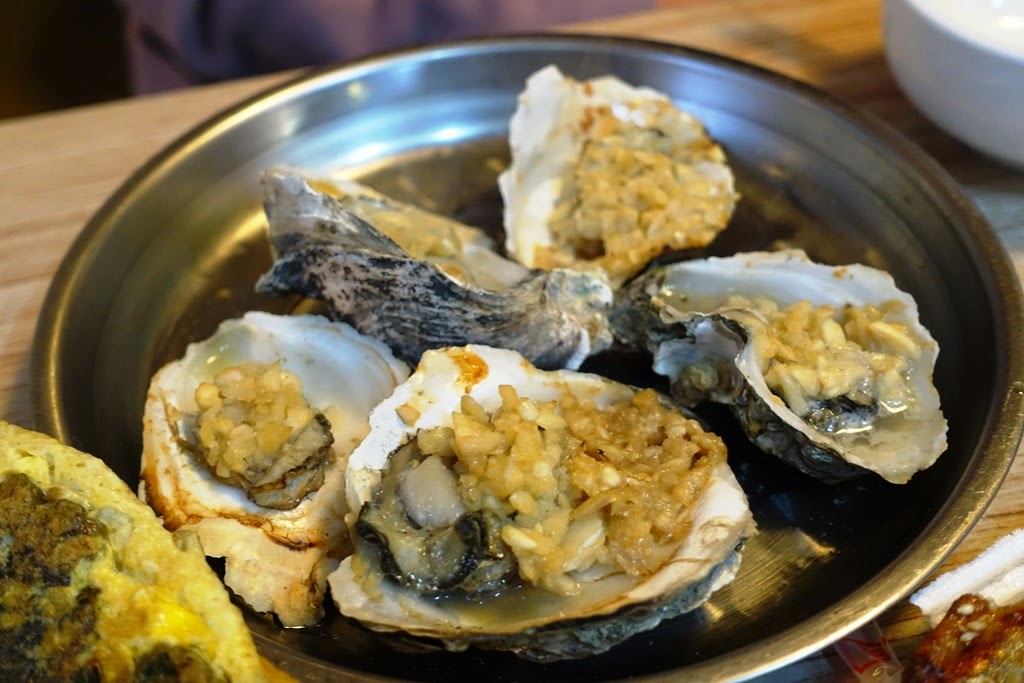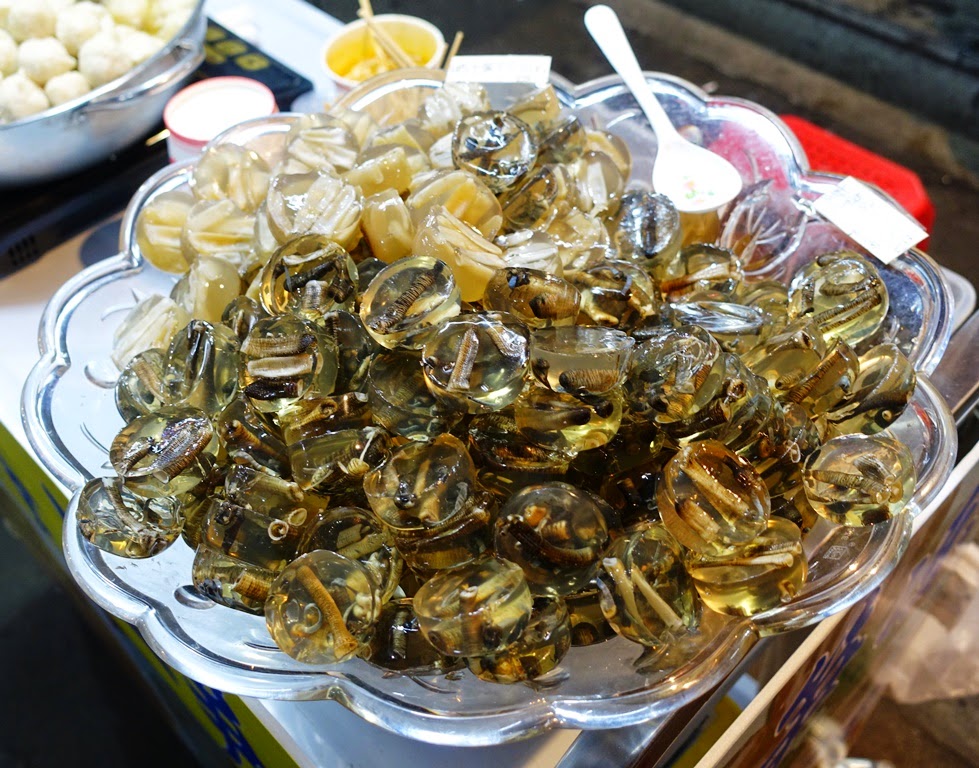With the end coming into sight on our tour
in China, we've been trying to make good use of those three-day American
holiday weekends to see as much of this country as we can before it's time to
move on. This past weekend being the occasion of Dr. Martin Luther King Jr.'s
birthday, we flew last Friday evening from Shànghăi 上海 to Xiàmén 厦门, a city located in the coastal region of Fújiàn
Province 福建省, and just a stone’s
throw from Kinmen 金門, the island once known as Quemoy that’s
been held by the Republic of China since the end of the Chinese Civil War in
1949. Most of the people known today as Taiwanese are descended from settlers who
sailed across the Taiwan Strait 台海 from Fujian, my bĕnshĕngrén 本省人 mother-in-law’s ancestors probably included (I say “probably”, because
like many Taiwanese, she’s rather fuzzy on the details of her descendants). For
my wife, having just returned from her wàishĕngrén 外省人 father’s funeral in Taiwan, it must’ve been an odd experience coming to
a place where she could understand the local speech, as the Taiwanese dialect
that she’s as equally fluent in as Mandarin is a variant of the Southern Min languages 闽南话 spoken in Fujian. From my perspective, this
part of China, and in particular the island of Gŭlàng Yŭ 鼓浪屿, where we stayed the first two nights, was
an interesting mixture of Shanghai and Taiwan.
The lights of Xiamen from the ferry to Gulang Yu
Only five minutes by ferry from Xiamen,
Gulang Yu is a step back into another era. The island was once an International
Foreign Settlement, complete with a Sikh police force, much like Shanghai. The foreigners
are long gone, but many of the colonial villas remain, albeit in various states
of repair. We stayed in one such building, appropriately called 1930, which
evoked memories of that time in both appearance and atmosphere (though fortunately
with updated heating and plumbing). The view from 1930’s rooftop on Saturday
morning looking toward Xiamen:
Gulang Yu attracts Chinese tourists by the
boatloads, but the streets were quiet on our first morning as we set off
exploring following breakfast. The food stands and souvenir shops were just
beginning to open up for business, including this establishment where the staff
dressed as Red Guards in a strange nod to nostalgia somewhat out of place on an
island so closely associated with Western traders:
Amber on the beach
First stop on our sightseeing tour was Shūzhuāng
Garden 菽庒花园, laid out by a wealthy Taiwanese in 1916 (though
at that time he would’ve been considered a Japanese national) along the
waterfront at the southern end of the island. The grounds contain a piano
museum – Western residents used to give lessons to the locals on how to play,
and Gulang Yu has provided China with some of its best pianists. There are good
views over the sea as well as of Sunlight Rock 日光公园, at 93 meters (305 feet) the island’s highest point:
It didn’t take long for Gulang Yu to get crowded, a fact we noticed as
we made our way from the garden back to the central part of the island. The
1917 Ecclesia Catholica 天主堂 church was disappointingly closed, as was
the former Japanese Consulate (one of four foreign diplomatic legations that
used to be on Gulang Yu, the others representing Spain, the United States and
some other country):
Many old buildings have been spruced up (and
new buildings have been erected that are meant to look old ) for the purpose of
selling snack foods to the tourists, while the early-20th century ambiance proves a magnet for couples having wedding photos taken – there were
four pairs doing so just in one small plaza:
For my daughter, however, the highlight of
our visit was no doubt Underwater World Xiamen 海底世界, an aquarium where the seals and dolphins were depressingly housed in
tanks that were too small for them, but which did have an admittedly good
collection of other undersea creatures, a walk-through tunnel and an impressive
sperm whale skeleton:
There were good views across the Lujiang Channel of Xiamen city:
The main street close to our hotel was absolutely packed…
…but the side streets and alleyways could be blissfully quiet:
While Amber and Pamela went to have their hair washed at a local salon,
I ventured back toward the southern end of Gulang Yu to another garden, Hàoyuè
Garden 皓月园, where there were also scenic vistas of
Xiamen:
The garden is noted for its large statue of Koxinga 郑成功塑像. The half-Japanese semi-pirate Koxinga was a
Ming dynasty 明朝 loyalist who, in a somewhat eerie parallel to what
happened after 1949, invaded Taiwan in 1661-1662 and drove out the Dutch,
establishing the island as a base which he intended to use to “retake the
Mainland” from the Qing. It didn’t come about, of course, and the Qing
eventually captured Taiwan in 1683. For the present day Chinese government,
Koxinga is a propaganda symbol too good to pass up, hence the large statue of
the general in Haoyue Garden looking toward Taiwan. The statue itself, however,
was crudely sculpted and looks far more impressive from a distance than up
close:
Walking back to meet the girls, I passed by a number of attractive early
20th-century buildings. Reunited, the three of us then went off in
search of the former American consulate; on the way we passed a house that had
a very American-looking eagle and shield above the entrance way. There was no
information outside the building to explain its original purpose, however:
Like the other consulates, the former American one was closed to the
public, and only the side of the building was visible from the outside. Even
so, it looks a lot nicer than the shopping mall where I currently serve
American citizens and interview Chinese visa applicants:
Dinner was a Taiwanese-style oyster omelet, along with oysters and sea
snails, and washed down with a weak beer called Sedrin, brewed by Anheuser-Busch
InBev and having some sort of connection to the NBA. Signs for it could be seen
along the road during the bus ride that we took into Hakka country the following day:
One local delicacy we didn’t try,
but which could be seen everywhere on the island, was tŭsŭndòng 土笋冻, jellied sandworms. After you, I insist,
please:
Pamela was amused, and a little bewildered, by all the shops and food
stands on Gulang Yu claiming to sell Taiwanese snacks. She was unfamiliar with
many of the so-called items from “home”, and of the the ones she did recognize
and try, she complained about the taste (or lack thereof). For the Chinese, however, the
characters 台湾 indicated the presence of something they
needed to stand in long lines for:
At the end of a long day, it was back to the 1930 and a final look
toward Xiamen and Sunlight Rock before calling it a night:










































No comments:
Post a Comment